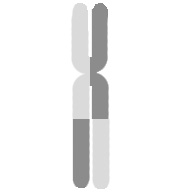Sister chromatid exchange


Sister chromatid exchange (SCE) is the exchange of genetic material between two identical sister chromatids.
It was first discovered by using the Giemsa staining method on one chromatid belonging to the sister chromatid complex before anaphase in mitosis. The staining revealed that few segments were passed to the sister chromatid which were not dyed. The Giemsa staining was able to stain due to the presence of bromodeoxyuridine analogous base which was introduced to the desired chromatid.
The reason for the (SCE) is not known but it is required and used as a
Sister chromatid exchange has also been observed more frequently in B51(+) Behçet's disease.[3]
Mitosis
Meiosis
The
During oogenesis in the nematode Caenorhabditis elegans the sister chromatid, or even the same DNA molecule, can serve as a meiotic repair template for both crossover and non-crossover recombination.[9] Non-crossover events are the most frequent recombination outcome. For DNA double strand breaks induced throughout meiotic prophase I, the sister or intra-chromatid substrate is available as a recombinational repair partner.[9]
See also
- Meiosis
- Homologous recombination
- Sister chromatid
References
External links
- Sister+chromatid+exchange at the U.S. National Library of Medicine Medical Subject Headings (MeSH)
